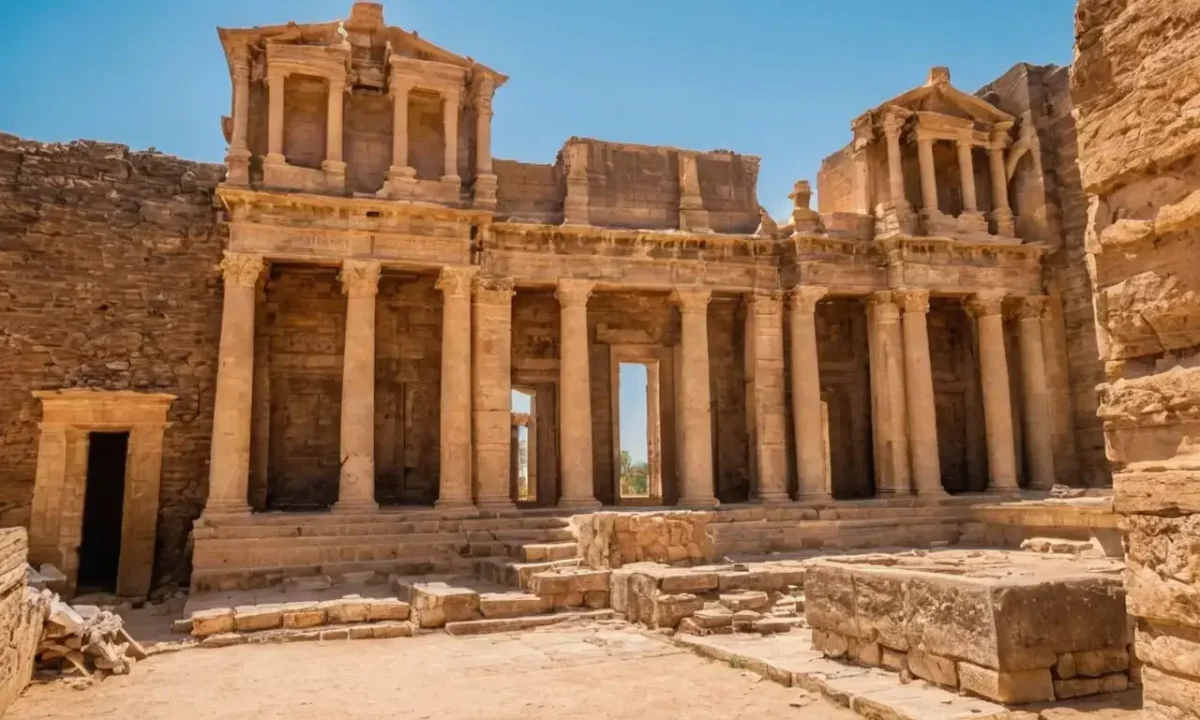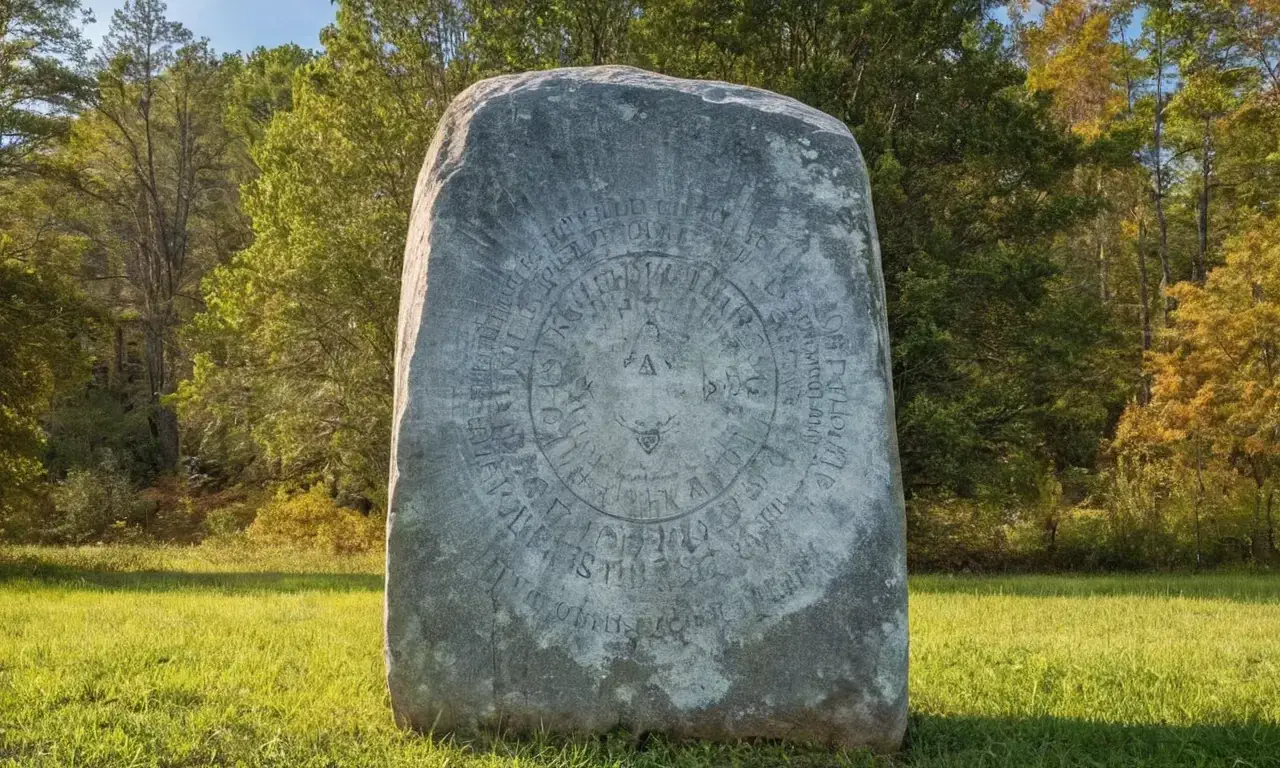
Georgia Guidestones: Mystery Monument Destroyed in Explosion

The Georgia Guidestones, a prominent granite monument located in Elberton, Georgia, has captivated public imagination for decades. Commissioned by an anonymous individual known only as "Robert C. Christian," the structure's enigmatic inscriptions and controversial history have fueled numerous theories about its true purpose and creator. This article delves into the fascinating story of the Georgia Guidestones, exploring their origins, controversies surrounding them, and the recent explosion that has left a lasting impact on this enduring monument.
The primary objective of this article is to provide a comprehensive overview of the Georgia Guidestones, examining their historical context, analyzing the various theories surrounding their creation, and discussing the events leading up to their destruction. By exploring these aspects in detail, we aim to shed light on the complex legacy of this iconic structure while acknowledging the unanswered questions it continues to raise.
The Georgia Guidestones: A Monument of Mystery
The Georgia Guidestones stands as a testament to the enduring power of mystery and speculation. Commissioned in 1979 by an individual who chose to remain anonymous, the monument's design and inscriptions have sparked countless debates and fueled numerous conspiracy theories. Its imposing presence on a rural landscape has made it a focal point for those seeking answers about its true purpose and the motivations behind its creation.
The Guidestones themselves are composed of granite slabs that stand tall, their surface adorned with cryptic messages in multiple languages. These messages, written in English, Spanish, Swahili, Arabic, Chinese, Hindi, Russian, and Hebrew, aim to convey a set of principles intended to guide humanity towards a more harmonious future. However, the exact meaning behind these inscriptions remains open to interpretation, leading many to believe that the Guidestones hold a deeper significance beyond their literal translation.
The monument's design is also noteworthy for its unique features. The Guidestones are arranged in a specific configuration, with each stone inscribed with a different message. This arrangement suggests a deliberate effort to create a lasting and impactful symbol of human progress. However, the lack of clear explanations regarding the purpose behind these inscriptions has only fueled speculation about the true intentions of the individual who commissioned them.
Robert C. Christian and the Enigma of the Guidestones
The identity of Robert C. Christian, the man behind the Georgia Guidestones, remains shrouded in mystery. He was a self-proclaimed "philosopher" who believed that humanity needed guidance to navigate its future. His motivations for creating the monument are unclear, but he expressed a desire to leave behind a legacy that would inspire future generations.
Christian's anonymity adds another layer of intrigue to the story of the Guidestones. He chose not to reveal his identity, which has led many to speculate about his true intentions and beliefs. Some believe he was motivated by a desire to promote peace and unity among different cultures, while others see him as someone who sought to influence global society through this unique monument.
Despite the lack of concrete information about Christian's life and motivations, his legacy continues to fascinate people worldwide. The Georgia Guidestones have become a symbol of both mystery and hope, prompting countless individuals to delve into their origins and ponder their potential impact on humanity.
Controversial Inscriptions and Unanswered Questions
The Georgia Guidestones are not only a physical monument but also a repository for controversial ideas about human nature and societal progress. The inscriptions themselves contain a mix of philosophical concepts and seemingly utopian ideals, raising questions about the feasibility of achieving such goals in reality.
One prominent inscription reads: "Maintain humanity under 500,000 in perpetual balance with nature." This statement has been interpreted by some as advocating for population control, sparking debate about ethical considerations surrounding such a proposal. Others argue that it reflects a broader concern about the environmental impact of human activity and the need to find sustainable solutions for future generations.
Another controversial aspect of the Guidestones is their association with "The New World Order." This term refers to a hypothetical global power structure that some believe will emerge in the coming decades, potentially leading to a new era of global governance. The Guidestones' cryptic messages have been interpreted by some as evidence supporting this theory, further fueling speculation about their true purpose and the intentions behind their creation.
Despite these controversies, the Georgia Guidestones continue to inspire debate and discussion. Their enduring presence in public discourse highlights the ongoing need for ethical considerations when discussing issues like population control and global governance. The monument serves as a reminder that even seemingly simple structures can hold profound meaning and become focal points for complex societal debates.
Vandalism, Conspiracy Theories, and a Mysterious Explosion

The Georgia Guidestones have not been immune to vandalism throughout their existence. Over the years, various individuals have attempted to alter or deface the monument, reflecting the ongoing debate surrounding its purpose and message. These acts of vandalism have only added to the mystery surrounding the Guidestones, further fueling speculation about their true significance.
One particularly notable incident involved a group of activists who vandalized the monument in 2018 by painting anti-establishment slogans on its surface. This act of protest highlighted the ongoing tension between those who believe the Guidestones represent progress and those who view them as a symbol of societal control.
However, perhaps the most significant event related to the Georgia Guidestones was the explosion that occurred in 2022. The incident destroyed much of the monument, leaving behind a legacy of unanswered questions about its true purpose and the motivations behind it. While authorities have yet to determine the cause of the explosion, speculation abounds regarding potential culprits and motives.
The destruction of the Georgia Guidestones has left many wondering what impact this event will have on the future of the monument and the ongoing debate surrounding its meaning. It also raises questions about the responsibility of individuals who create public art and the potential consequences of their actions.
The Destruction of the Georgia Guidestones
The explosion that destroyed a portion of the Georgia Guidestones in 2022 was a significant event that has left many wondering about its cause and impact. While authorities have yet to determine the exact reason for the incident, speculation abounds regarding potential culprits and motives.
One theory suggests that the explosion may have been caused by an act of vandalism or sabotage. This theory is supported by the fact that the monument had been targeted by vandals in the past. Another possibility is that the explosion was a result of negligence on the part of those responsible for maintaining the monument.
Regardless of the exact cause, the destruction of the Georgia Guidestones has left a lasting impact on both the local community and the broader public discourse surrounding the monument's legacy. The incident serves as a reminder of the fragility of cultural heritage and the importance of protecting historical landmarks from vandalism and neglect.
Legacy and Future Uncertainties
The Georgia Guidestones have become an enduring symbol of mystery, sparking countless debates about their true purpose and the motivations behind their creation. Despite their controversial nature, the monument continues to attract visitors from around the world who are drawn to its unique design and enigmatic inscriptions.
However, the future of the Georgia Guidestones remains uncertain. The explosion that destroyed a portion of the monument has left many wondering what will become of the remaining structure. Some believe it should be preserved as a historical landmark, while others advocate for its demolition to prevent further damage or vandalism.
Ultimately, the fate of the Georgia Guidestones rests in the hands of those who are responsible for their care and preservation. As time passes, the monument's legacy will continue to evolve, prompting ongoing discussions about its significance and the role it plays in shaping our understanding of humanity's future.
Conclusion
The Georgia Guidestones have left an indelible mark on American history and culture. Their enigmatic inscriptions, controversial nature, and mysterious destruction have sparked countless debates and fueled speculation for decades. The monument serves as a reminder that even seemingly simple structures can hold profound meaning and become focal points for complex societal issues.
As we move forward, it is crucial to approach the legacy of the Georgia Guidestones with an open mind and a willingness to engage in respectful dialogue about their potential impact on society. Whether they are preserved as a historical landmark or demolished to prevent further damage, the monument's story will continue to be told for generations to come.
Leave a Reply





Related Links